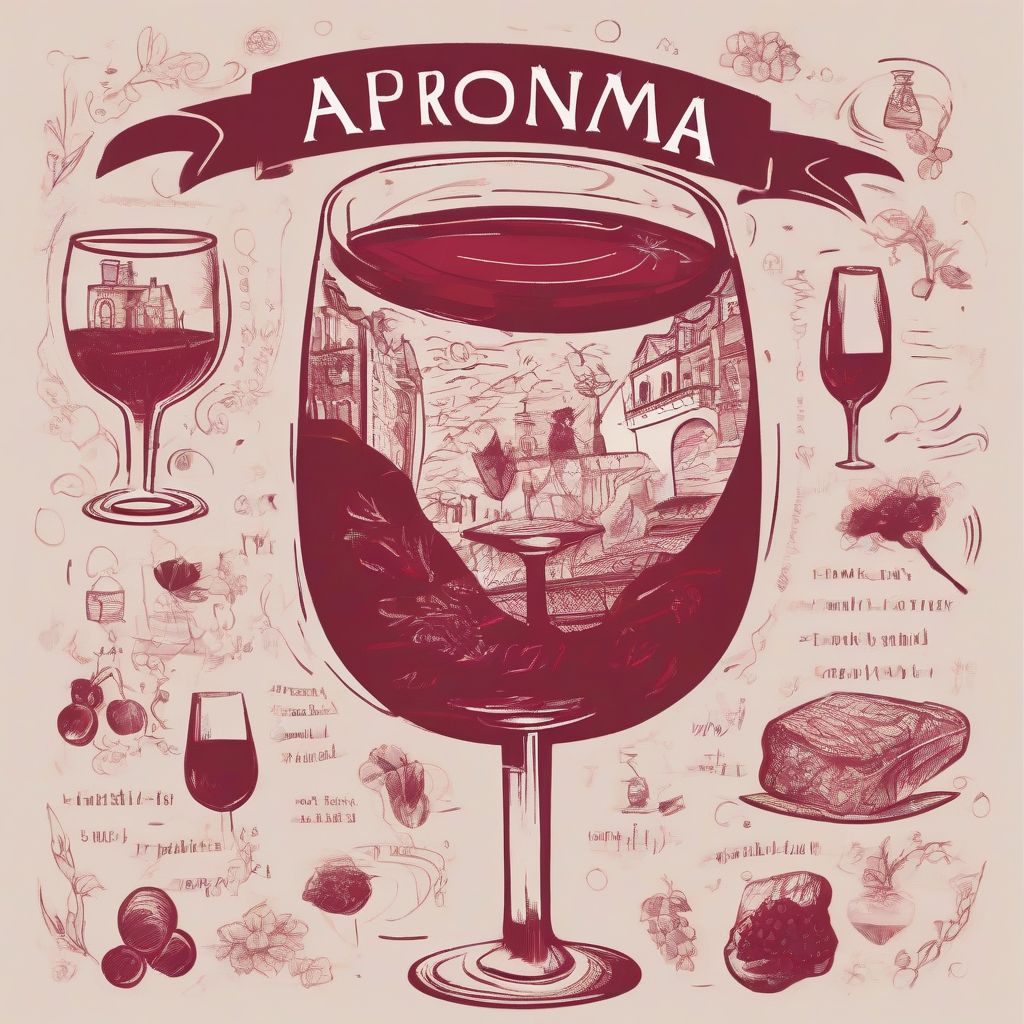Have you ever sipped a glass of wine and thought, “This is amazing! I wish I could describe it like the pros?” Well, guess what? You can! Writing a detailed and balanced wine review isn’t just for sommeliers with fancy vocabularies. It’s about observation, thoughtful consideration, and describing your experience in a way that helps others appreciate the nuances of what’s in their glass.
Whether you’re a wine enthusiast looking to up your game or simply curious about expressing your tasting experiences better, this guide will equip you with the tools and knowledge to write a captivating and informative wine review.
Understanding the Key Elements of Wine Tasting
Before we dive into the writing, let’s refresh ourselves on the fundamental elements that form the backbone of any wine review:
1. Appearance:
Hold your glass up to the light and observe the wine’s color and clarity. Is it a vibrant ruby red, a pale lemon yellow, or a deep inky purple? Is it crystal clear, slightly hazy, or showing sediment? Describing the appearance sets the stage for the overall sensory experience.
2. Aroma:
This is where the fun begins! Gently swirl your wine and take a deep sniff. What aromas fill your nose? Do you detect fruity notes of berries, citrus, or stone fruits? Perhaps some floral hints of rose or lavender? Or maybe earthy notes of leather, tobacco, or spice? Be as specific as possible and try to identify both primary aromas (from the grape varietal) and secondary aromas (from winemaking techniques like oak aging).
3. Taste:
Now for the main event! Take a sip and let the wine coat your palate. What flavors do you perceive? How do they compare to the aromas you detected earlier? Consider the wine’s sweetness (dry to sweet), acidity (tart to mellow), tannin (that drying sensation), body (light to full), and alcohol content.
4. Finish:
After you swallow (or spit, if you’re tasting multiple wines!), pay attention to the lingering flavors and sensations. This is the wine’s “finish.” Is it short and abrupt, or does it linger pleasantly? What flavors or sensations are left behind?
 Wine Tasting Notes
Wine Tasting Notes
- Want to drink better wine? Take better notes with Wine Folly's Wine Journal!
- Wine diary features instructions and guided tasting notes using the 4-step tasting method developed by wine critics and sommeliers
- BECOME A WINE TASTING EXPERT, ONE GLASS AT A TIME: Clever Fox Wine Journal is an easy-to-follow guided wine diary with everything you need to bring joy and simplicity to the exciting art of tasting and judging wines.
- SUITABLE FOR BEGINNERS & PROFESSIONALS ALIKE: Inside, you will find all the information you need to take the guesswork out of wine tasting, including a complete wine aroma wheel, a wine glass guide, and 132 guided fill-in pages to analyze your wines.
- Concise information details everything you need to know to rate wines, followed by interactive fill-in pages for tasting and judging wines.
- Prompts guide you to create useful tasting notes that include essential details of vintage, price, producer, region and country, grape variety, when and where tasted.
- The Wine Savant’s Wine Journal is the quintessential companion for both novice enthusiasts and seasoned connoisseurs looking to chronicle their vinous adventures. This beautifully crafted journal is not just a tool, but a treasure trove designed to capture the essence of each wine bottle enjoyed. With its sophisticated hardcover, the journal exudes a classic appeal that makes it a delightful addition to any wine lover’s collection.
- Inside, the journal offers structured entry pages that can accommodate personal notes for up to 160 wine bottles. This comprehensive capacity allows users to document a vast array of wines over time, from spontaneous tastings to special occasions. Each page is thoughtfully designed to include sections for recording the wine’s name, origin, producer, vintage, and a variety of tasting notes such as aroma, flavor, body, and finish.
- TASTE & JUDGE WINES, THE EXPERT WAY – The Legend Wine Tasting Journal is a user-friendly wine tasting diary designed to guide each step of your tasting journey, helping you better understand and judge the wines you taste.
- PERFECT FOR ALL LEVELS, INCLUDING BEGINNERS – Whatever your experience level, this wine journal notebook has all the tools you need to master wine tasting. Inside, you will find detailed instructions, an aroma wheel, a glass guide, and more.
- Spacious Interior: The Wine Passport contains 48 pages, including 20 entry logs and 8 bonus pages for sketches, memories, or affixing mementos.
- Premium Construction: Featuring a foil-stamped stipple cover and center-sewn binding, this Wine Passport is built to last and safeguard your memories.
- Package Contents: the package contains 2 pieces of different brown wine books for your use, each with 96 inside pages documenting your wine tasting experience, including the wine's producer, region, taste, aroma, occasion, reviews and more
- Proper Size: our leather wine journal measures about 8 x 3.7 inches/ 20.3 x 9.5 cm, suitable for you to hold; It can be easily put into your pocket, backpack and more, which brings a lot of convenience
- MOLESKINE PASSION JOURNAL: Whatever your passion, plan your next steps & track your progress with a Moleskine Passion Journal, with notebook designs for cooking & recipes, books & reading, traveling, wedding planning, gardening, fitness, wine, & more.
- DURABLE COVER & ELASTIC CLOSURE: From tracking your workout goals & plans, to a reading log, recording recipes, or planning out your perfect garden or wedding, the leather-like Moleskine cover & ivory paper pages are perfect for recording your passion.
- Custom size fits perfectly alongside your phone
- Better notes with the included tasting card
Crafting Your Wine Review: A Step-by-Step Guide
Now that you’ve honed your tasting skills, let’s structure your observations into a compelling review:
1. Start with the Basics:
- Wine Name: State the complete name of the wine, including the producer, vintage (year), and any specific designations (e.g., Reserve, Grand Cru).
- Region: Indicate the wine’s origin, down to the specific appellation or vineyard if known.
- Grape Varietal(s): List the grape varietal(s) used in the wine, such as Cabernet Sauvignon, Chardonnay, or Pinot Noir. If it’s a blend, mention the dominant grapes.
2. Describe the Appearance:
Use vivid and evocative language to describe the wine’s color and clarity. For example:
- “The wine poured a luminous ruby red, hinting at its youthful vibrancy.”
- “A pale golden hue with glints of green suggested the wine’s crisp acidity.”
3. Explore the Aromas:
This is your opportunity to be creative and paint a picture with your words. Instead of simply listing aromas, use descriptive language to convey the intensity and complexity:
- “The bouquet burst forth with aromas of ripe blackberries, cassis, and hints of vanilla and spice, suggesting time spent aging in oak.”
- “Delicate floral notes of honeysuckle and jasmine danced above a core of white peach and lemon zest, creating an alluringly aromatic experience.”
4. Delve into the Taste:
Describe the wine’s flavors, structure, and balance:
- Sweetness: “Bone dry,” “off-dry,” “slightly sweet,” “lusciously sweet”
- Acidity: “Crisp acidity,” “bright and refreshing,” “mouthwatering,” “well-integrated acidity”
- Tannins: “Firm tannins,” “velvety tannins,” “grippy,” “well-structured”
- Body: “Light-bodied,” “medium-bodied,” “full-bodied,” “rich and opulent”
- Flavor Profile: “The palate echoed the nose, with juicy blackberry and plum flavors accented by hints of dark chocolate and cedar.”
5. Analyze the Finish:
Describe the length and complexity of the finish:
- “The finish was long and satisfying, with lingering notes of dark chocolate and spice.”
- “A refreshing, citrusy finish left me wanting another sip.”
6. Offer Your Overall Impression:
This is where you synthesize your observations and provide your personal assessment of the wine.
- Balance: Were the elements of the wine (acidity, tannins, fruit, etc.) well-integrated and harmonious?
- Complexity: Did the wine evolve in the glass, revealing different layers of flavor and aroma over time?
- Typicity: How well did the wine represent the characteristics of its grape varietal, region, or style?
Example:
“Overall, this is a beautifully balanced and expressive Cabernet Sauvignon that showcases the best of the Napa Valley. Its complex aromas, rich flavors, and lengthy finish make it a wine to savor and enjoy for years to come. Highly recommended.”
7. Consider Adding Pairing Suggestions:
If you’d like, offer recommendations for foods that would pair well with the wine. This adds practical value for your readers.
Example:
“This wine’s robust tannins and rich fruit flavors would pair beautifully with grilled steak, hearty stews, or aged cheeses.”
8. Proofread and Polish:
Before sharing your review, take the time to proofread carefully for any spelling or grammatical errors. Clear and concise writing will enhance the credibility of your review.
Tips for Writing Engaging and Informative Wine Reviews
- Use Descriptive Language: Avoid generic terms and strive to paint a vivid picture with your words.
- Be Specific: Instead of simply saying “fruity,” identify specific fruits like “ripe strawberry” or “zesty grapefruit.”
- Provide Context: If you’re writing for a specific audience (beginners vs. connoisseurs), tailor your language and level of detail accordingly.
- Be Objective but Personal: While it’s important to be objective in your assessment, don’t be afraid to let your personality shine through in your writing style.
- Practice Makes Perfect: The more you taste and write about wine, the more confident and articulate you’ll become in your descriptions.
Writing a detailed and balanced wine review is a rewarding way to enhance your appreciation for wine and share your passion with others. Remember, the most important element of any review is your honest and thoughtful perspective. So, grab a glass, savor the experience, and let your tasting notes flow!










